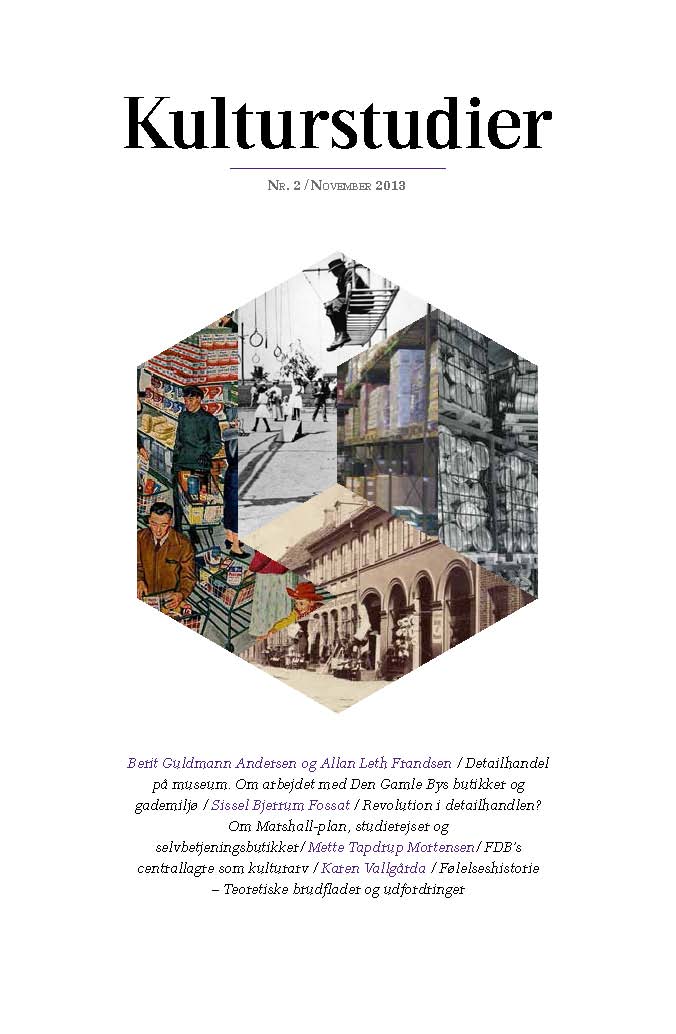FDB’s centrallagre som kulturarv.
DOI:
https://doi.org/10.7146/ks.v4i2.15520Resumé
I disse år tales meget om velfærdssamfundets eller efterkrigstidens kulturarv. Hvordan skal vi forholde os til de mange bygninger i nye materialer, der samtidigt er udtryk for nye måder at indrette samfundet på? Denne artikel bygger på en undersøgelse af FDB’s centrallagre, der i mere end 50 år har været produktions- og lagringssted for detailhandlens vareflow.
Abstract
Since the first member-owned co-operative shops emerged in Denmark in the second half of the 19th century, and organised themselves as the FDB in 1896, the latter’s prime objective has been to provide its members with a wide range of products at the most favourable prices. This has required continuous innovation and change, not least in the second half of the 20th century, as competition in the retailing market intensified. In the mid-1950s, the management of FDB implemented a comprehensive rationalisation of production, transport, storage, distribution and sales, as well as the overall structure connecting these aspects of its enterprise. Drawing on inspiration from the USA, within a decade this process radically transformed both the FDB itself and Danish retail trade in its entirety.
In a broader perspective, this rationalisation process and its consequences is a part of the history of the Danish welfare society, since it concerns the emergence of the modern consumer, as well as technical, economic and administrative innovation of the retail trade. The local co-operative shop with the manager behind the desk and the goods sold loose was replaced by modern self-service shops with standardised equipment, and numerous multi-storey warehouses distributed in the old city centres were in the early 1960s substituted by seven, strategically located central warehouses serviced by fork-lift trucks. The one located in Albertslund functioned from 1964 onwards as the organization’s headquarters.. In 2007 Kulturarvsstyrelsen (The Heritage Agency of Denmark) proclaimed this warehouse in Alberslund, today the headquarters of the Coop, to be one of 25 national sites of industrial heritage.
Downloads
Publiceret
Citation/Eksport
Nummer
Sektion
Licens
Tidsskriftet forbeholder sig ret til førsteudgivelsen, mens ophavsretten til artiklen tilfalder forfatteren.
Artikler udgivet af Kulturstudier licenseret under en Creative Commons Navngivelse-IkkeKommerciel-IngenBearbejdelse 4.0 International Licens





